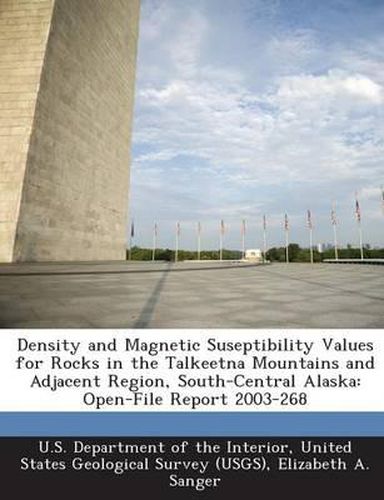Readings Newsletter
Become a Readings Member to make your shopping experience even easier.
Sign in or sign up for free!
You’re not far away from qualifying for FREE standard shipping within Australia
You’ve qualified for FREE standard shipping within Australia
The cart is loading…






This report presents a compilation and statistical analysis of 306 density and 706 magnetic susceptibility measurements of rocks from south-central Alaska that were collected by U.S. Geological Survey (USGS) and Alaska Division of Geological and Geophysical Surveys (ADGGS) scientists between the summers of 1999 and 2002. This work is a product of the USGS Talkeetna Mountains Transect Project and was supported by USGS projects in the Talkeetna Mountains and Iron Creek region, and by Bureau of Land Management (BLM) projects in the Delta River Mining District that aim to characterize the subsurface structures of the region. These data were collected to constrain potential field models (i.e., gravity and magnetic) that are combined with other geophysical methods to identify and model major faults, terrane boundaries, and potential mineral resources of the study area. Because gravity and magnetic field anomalies reflect variations in the density and magnetic susceptibility of the underlying lithology, these rock properties are essential components of potential field modeling. In general, the average grain density of rocks in the study region increases from sedimentary, felsic, and intermediate igneous rocks, to mafic igneous and metamorphic rocks. Magnetic susceptibility measurements performed on rock outcrops and hand samples from the study area also reveal lower magnetic susceptibilities for sedimentary and felsic intrusive rocks, moderate susceptibility values for metamorphic, felsic extrusive, and intermediate igneous rocks, and higher susceptibility values for mafic igneous rocks. The density and magnetic properties of rocks in the study area are generally consistent with general trends expected for certain rock types.
$9.00 standard shipping within Australia
FREE standard shipping within Australia for orders over $100.00
Express & International shipping calculated at checkout
This report presents a compilation and statistical analysis of 306 density and 706 magnetic susceptibility measurements of rocks from south-central Alaska that were collected by U.S. Geological Survey (USGS) and Alaska Division of Geological and Geophysical Surveys (ADGGS) scientists between the summers of 1999 and 2002. This work is a product of the USGS Talkeetna Mountains Transect Project and was supported by USGS projects in the Talkeetna Mountains and Iron Creek region, and by Bureau of Land Management (BLM) projects in the Delta River Mining District that aim to characterize the subsurface structures of the region. These data were collected to constrain potential field models (i.e., gravity and magnetic) that are combined with other geophysical methods to identify and model major faults, terrane boundaries, and potential mineral resources of the study area. Because gravity and magnetic field anomalies reflect variations in the density and magnetic susceptibility of the underlying lithology, these rock properties are essential components of potential field modeling. In general, the average grain density of rocks in the study region increases from sedimentary, felsic, and intermediate igneous rocks, to mafic igneous and metamorphic rocks. Magnetic susceptibility measurements performed on rock outcrops and hand samples from the study area also reveal lower magnetic susceptibilities for sedimentary and felsic intrusive rocks, moderate susceptibility values for metamorphic, felsic extrusive, and intermediate igneous rocks, and higher susceptibility values for mafic igneous rocks. The density and magnetic properties of rocks in the study area are generally consistent with general trends expected for certain rock types.